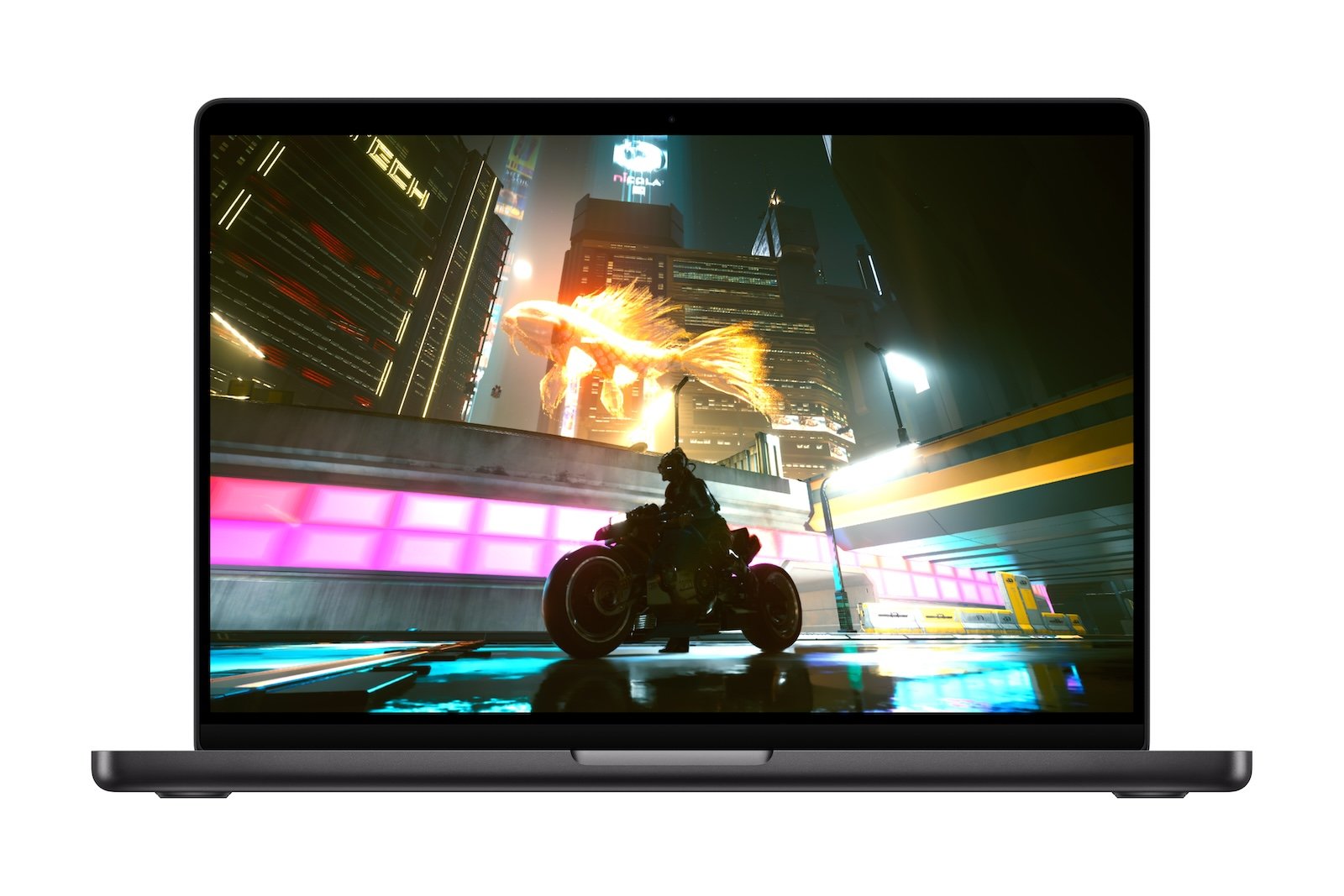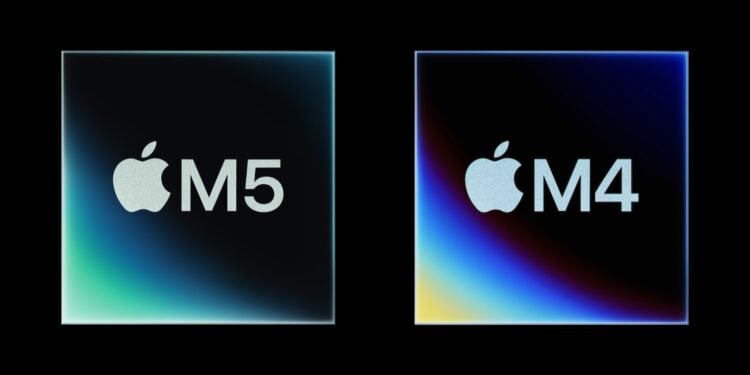Apple has unveiled the new M5 chip—the latest generation of its own silicon, which is used in the MacBook, iPad Pro, and Apple Vision Pro. The successor to the M4 brings noticeable improvements in performance, efficiency, and, above all, AI applications. With a more powerful Neural Engine, higher memory bandwidth, and a redesigned graphics architecture, Apple demonstrates that the future of its in-house chips is even more focused on artificial intelligence and machine learning.
Since Intel switched to its own processors, Apple has consistently refined the design and optimization of its chips. Each new generation brings significant advances in performance and energy efficiency. The M5 continues this path, focusing even more clearly on AI workflows, faster computing operations, and professional applications. What's particularly interesting is how closely Apple coordinates hardware and software to achieve the smoothest possible interaction between the operating system, applications, and chip architecture.
Neural and AI performance
The biggest innovation in the M5 concerns performance in AI and machine learning tasks. The chip uses new neural accelerators, already familiar from the A19 and A19 Pro processors in the latest iPhones. These ensure significantly faster results in generative AI processes and machine learning. Apple cites specific examples:
- The time to first token for large language models (LLM) is 3.6 times shorter than for M4.
- Topaz Video enhances videos 1.8 times faster than on an M3.
- Rendering in Blender with ray tracing is 1.7 times faster.
• AI-powered speech enhancement in Premiere Pro is 2.9 times faster than on an M3.
Additionally, the Neural Engine has been redesigned. It retains its 16 cores, but according to Apple, it's significantly more efficient and better suited to parallel AI workflows. These advancements make the M5 particularly attractive for developers, creatives, and professionals who rely on AI-powered software.
Memory bandwidth
There have also been significant improvements in storage connectivity. The M5 offers a bandwidth of 153 GB/s—around 27.5 percent more than the M4's 120 GB/s. This higher bandwidth noticeably accelerates compute-intensive tasks, especially when working with large datasets or generative AI models. Thanks to the improved data transfer between the CPU, GPU, and RAM, video editing, 3D rendering, and scientific simulations also benefit from more stable and faster data throughput.
graphic
Graphics performance is another focus of the M5 generation. According to Apple, the new chip achieves up to 45 percent higher GPU performance compared to the M4. This is made possible by the new neural accelerators and a third-generation ray tracing engine. This allows the GPU to render complex lighting effects and shadows more realistically and is significantly more efficient overall. Apple refers to "improved graphics capabilities" without specifying exactly what innovations it means. One thing is certain, however: The M5 offers massively increased graphics performance, which is particularly noticeable in rendering, 3D applications, and graphically demanding games.

processor
At its core, Apple remains true to the proven design of its chips. The M5 once again features a 10-core CPU with four performance cores and six efficiency cores. Nevertheless, the architecture has been refined. Apple calls the new performance cores the "fastest in the world." In practice, the CPU is said to be up to 15 percent faster in multithreaded tasks than the M4—a value that is consistent with leaked benchmarks.
This not only increases Apple's computing power but also its energy efficiency. The M5 can complete demanding tasks faster while extending the battery life of MacBooks and iPads.
Further details
In addition to pure computing power, there are also some changes on the hardware side. The new 14-inch MacBook Pro with the M5 can be configured for the first time with up to 4 TB of storage—twice as much as the M4. This makes Apple even more focused on professional users who need to store large amounts of data locally.
Another technical advance concerns the manufacturing process. The M5 uses TSMC's third-generation 3-nanometer process. This new manufacturing technology ensures higher transistor density, improved energy efficiency, and better heat dissipation.
The M5 will be available in multiple devices at launch: the 14-inch MacBook Pro, the iPad Pro, and the Apple Vision Pro. This expands Apple's use of its latest silicon across different device classes and solidifies the unified approach of its ecosystem.
Apple Silicon: The M5 shows where the journey is headed
The comparison between the M5 and M4 demonstrates that Apple is consistently focusing its silicon development on artificial intelligence, efficiency, and performance. The advances in the Neural Engine, memory bandwidth, and GPU performance are clearly noticeable, making the M5 one of the most powerful chips on the market today.
By switching to the new manufacturing process and integrating AI accelerators more closely, Apple is preparing its hardware for the coming years – with a clear focus on professional workflows, creative applications, and AI-based software. The M5 is less a small step and more a signal of where Apple Silicon is headed in the future. The best products for you: Our Amazon Storefront offers a wide selection of accessories, including those for HomeKit. (Image: Apple)
- Apple hints at 120 Hz support for upcoming Studio Display
- M5 iPad Pro vs. M4 iPad Pro: All the differences in detail
- iPhone with eSIM: A small modification with a big impact
- iPhone 17 Pro stays cool: All about the new vapor chamber
- AirPods Pro 3 vs. AirPods Pro 1: What's really changed
- Apple Watch Ultra 3 vs. Apple Watch Ultra 2: The Differences
- iPhone 17: Why this model is so convincing
- iPhone Air or iPhone 17 Pro? All the differences compared
- iPhone 17 vs. iPhone 16: All the differences in detail
- iPhone 17 Pro vs. iPhone 17 Pro Max: Differences at a glance
- iPhone Air: Seven facts about the new ultra-thin smartphone
- AirPods Pro 3: Apple's headphones with 8 exciting upgrades
- AirPods Pro 3 vs. AirPods Pro 2: The big comparison in detail
- Is the iPhone 17 Pro not worth it? The iPhone 18 Pro in focus
- Apple Watch Ultra 3 vs. Ultra 2, Series 11: Battery comparison
- iPhone 17 Pro: Everything about the new camera platform & more





